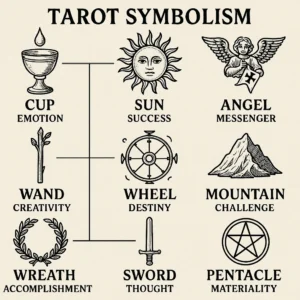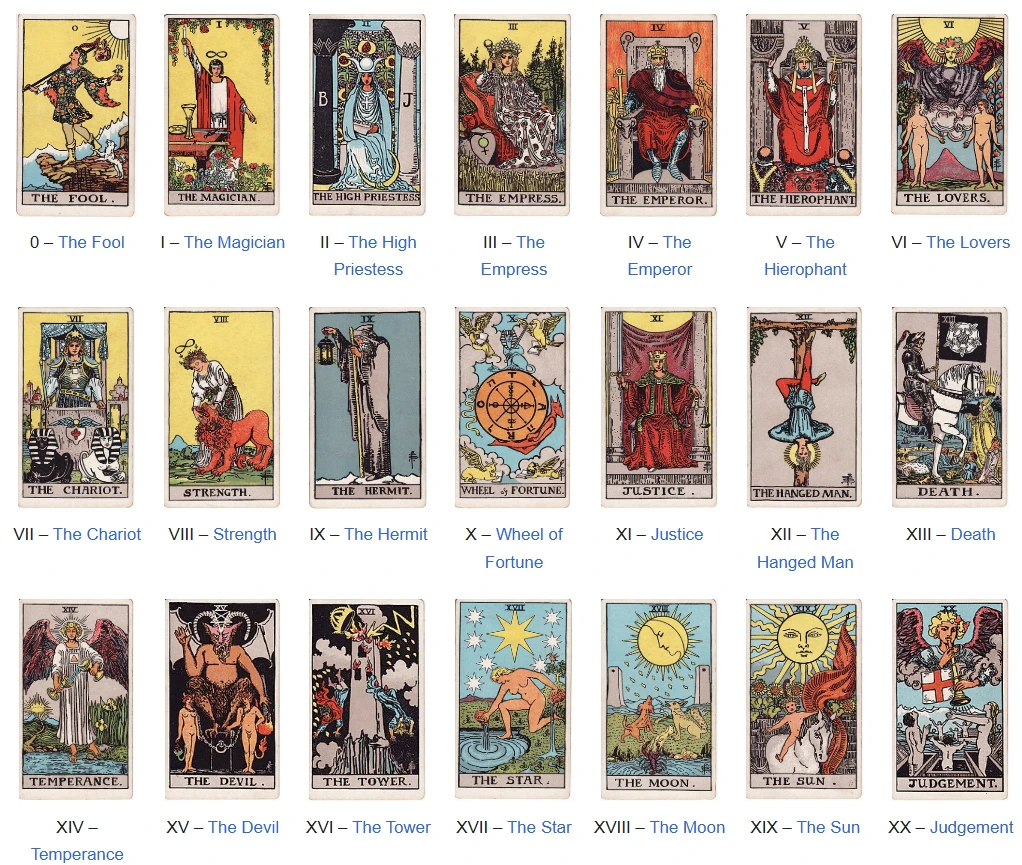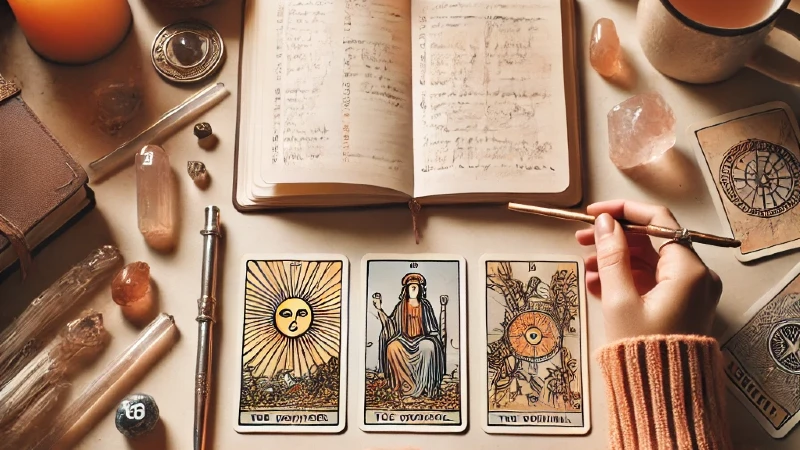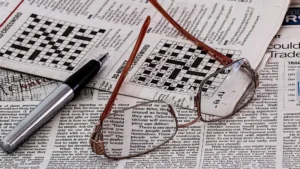Learning Tarot Cards: A Beginner’s Guide to Tarot Symbolism
Tarot reading is more than just a mystical practice; it’s a journey into self-discovery, intuition, and personal growth. Whether you’re drawn to the rich imagery, the allure of the unknown, or the desire to understand yourself better, learning tarot cards can be a fulfilling endeavor. This guide will walk you through the essentials, from understanding tarot symbolism to mastering the arcana, providing you with the tarot card basics needed to start your journey.
🃏 What Are Tarot Cards?
A standard tarot deck consists of 78 cards, divided into two main sections: the Major Arcana and the Minor Arcana.
Major Arcana (22 cards): These cards represent significant life events or spiritual lessons. Each card, from The Fool to The World, carries profound symbolism and meaning.
Minor Arcana (56 cards): These are divided into four suits—Wands, Cups, Swords, and Pentacles—each containing 14 cards. They reflect day-to-day events and situations.
Understanding the structure of the tarot deck is crucial for interpreting the messages conveyed during a reading.
🧠 The Importance of Tarot Symbolism
Tarot symbolism is the heart of tarot reading. Each card is rich with imagery, colors, numbers, and symbols that convey specific meanings. For instance, the color blue often represents intuition and calmness, while swords typically symbolize intellect and conflict.
By studying these symbols, you can deepen your understanding of each card’s message. Many beginners find it helpful to keep a journal to note their interpretations and insights as they study each card.

📚 Tarot Card Basics: Starting Your Journey
1. Choosing Your First Deck
For beginners, the Rider-Waite-Smith deck is highly recommended due to its clear imagery and widespread use in tarot literature. This deck serves as a standard reference point for many tarot interpretations.

2. Familiarizing Yourself with the Cards
Start by spending time with each card. Observe the imagery, note your initial impressions, and read about its traditional meanings. This process helps build a personal connection with the deck.
3. Daily Card Pulls
Pulling a daily card is an excellent practice for beginners. It allows you to explore the card’s meaning and reflect on how it relates to your day. Over time, this habit enhances your intuition and familiarity with the deck.
🗂️ Tarot Card Meanings Cheat Sheets
Creating or using tarot card meanings cheat sheets can accelerate your learning process. These summaries provide quick references to each card’s key themes and interpretations.
Major Arcana Cheat Sheet
| Card | Keywords |
|---|---|
| The Fool | Beginnings, innocence, spontaneity |
| The Magician | Manifestation, resourcefulness |
| The High Priestess | Intuition, mystery, subconscious |
| The Empress | Fertility, nurturing, abundance |
| The Emperor | Authority, structure, control |
| The Hierophant | Tradition, conformity, morality |
| The Lovers | Relationships, choices, harmony |
| The Chariot | Willpower, determination, victory |
| Strength | Courage, patience, compassion |
| The Hermit | Soul-searching, introspection |
| Wheel of Fortune | Change, cycles, destiny |
| Justice | Fairness, truth, law |
| The Hanged Man | Suspension, letting go, new perspectives |
| Death | Endings, transformation, transition |
| Temperance | Balance, moderation, purpose |
| The Devil | Bondage, addiction, materialism |
| The Tower | Upheaval, sudden change, revelation |
| The Star | Hope, faith, rejuvenation |
| The Moon | Illusion, fear, anxiety |
| The Sun | Positivity, fun, success |
| Judgment | Reflection, reckoning, awakening |
| The World | Completion, accomplishment, travel |
Minor Arcana Suits Overview
Wands: Creativity, passion, action.
Cups: Emotions, relationships, intuition.
Swords: Intellect, conflict, communication.
Pentacles: Material aspects, career, finances.
Each suit progresses from Ace to King, depicting a journey or evolution within its theme.
🔍 Understanding the Arcana
Major Arcana
The Major Arcana cards are the core of the tarot deck, representing significant life themes and spiritual lessons. They often indicate major events or turning points in a reading.
Minor Arcana
The Minor Arcana cards delve into the nuances of daily life. They provide context and detail to the broader messages conveyed by the Major Arcana.
Together, the Major and Minor Arcana offer a comprehensive view of the querent’s life, blending overarching themes with everyday experiences.
🧘♀️ Tips for Tarot Cards for Beginners
Trust Your Intuition: While traditional meanings are essential, your personal insights are invaluable.
Practice Regularly: Consistency helps build confidence and deepen your understanding.
Reflect and Journal: Documenting your readings enhances learning and tracks your progress.
Stay Open-Minded: Approach each reading with curiosity and without preconceived notions.
🧰 How to Do a Simple Tarot Reading
Step 1: Set Your Intention
Before beginning a reading, take a moment to center yourself. Light a candle, play calming music, or say a small prayer—whatever helps you focus.
Step 2: Shuffle the Cards
As you shuffle, think about your question or the guidance you’re seeking. Feel free to ask your cards something specific or keep it open-ended.
Step 3: Choose a Spread
Beginners often start with simple spreads:
One-Card Draw for quick insights.
Three-Card Spread representing Past, Present, Future or Situation, Action, Outcome.
Step 4: Interpret the Cards
Use your tarot card meanings cheat sheets, intuition, and notes to read each card. Focus on the imagery, symbols, and how the cards relate to each other.
Step 5: Reflect
Always take a few minutes post-reading to reflect or journal what you’ve learned or how it resonates with your life.
💡 Common Tarot Card Spreads for Beginners
| Spread Name | Number of Cards | Purpose |
|---|---|---|
| Daily Draw | 1 | General guidance or energy for the day |
| Past-Present-Future | 3 | Snapshot of timeline or decision-making |
| Decision Making | 2-5 | Analyze two options or outcomes |
| Celtic Cross | 10 | Deep dive into a situation or life path |
Starting small helps you gain confidence. As your comfort level grows, explore more elaborate spreads like the Celtic Cross or Astrological Spread.
🔮 Tarot Myths Debunked
Many myths surround tarot, especially for beginners. Let’s clear some up:
You can’t buy your own deck: False! Many people gift themselves their first tarot deck.
Tarot predicts the future exactly: Not quite. Tarot reveals possibilities, energy patterns, and insights—not fixed predictions.
You need psychic powers to read tarot: Nope! All you need is intuition, study, and practice.
Reversed cards are always bad: Reversals can indicate delays, inner work, or blocked energy—not necessarily negative outcomes.
Understanding these myths helps you approach tarot more openly and realistically.
📈 Learning Tarot Cards: Long-Term Mastery Tips
1. Create a Tarot Journal
Documenting your readings helps track patterns, deepen card meanings, and improve interpretations over time.
2. Study the History
Understanding tarot’s evolution—from 15th-century Italian playing cards to modern divination—adds richness to your practice.
3. Join a Tarot Community
Being part of forums or attending local meetups can offer support, diverse perspectives, and learning opportunities.
4. Practice Readings for Friends
Asking others for permission to read for them sharpens your skills and builds confidence. Always ensure consent and clarity.
5. Take Tarot Courses or Read Books
Some foundational books for learners:
“Seventy-Eight Degrees of Wisdom” by Rachel Pollack
“The Ultimate Guide to Tarot” by Liz Dean
Online platforms like YouTube, Udemy, and Skillshare also offer engaging, beginner-friendly content.
📸 Suggested Tarot Images to Visualize
To enhance your learning visually, here are four recommended images to generate:
A close-up of the Rider-Waite-Smith deck with a candle-lit background.
A beginner performing a three-card spread with notes around.
A Tarot Symbolism cheat sheet laid beside an open tarot deck.
A side-by-side view of Major vs Minor Arcana cards in a mystical setting.
Let me know if you’d like these images generated now!
❓ Frequently Asked Questions (FAQs) About Learning Tarot Cards
1. Can anyone learn tarot, or do you need a gift?
Anyone can learn tarot! While some may have stronger intuitive abilities, reading tarot is a skill that improves with time, study, and experience.
2. What’s the best tarot deck for beginners?
The Rider-Waite-Smith deck is the most beginner-friendly due to its symbolic imagery and abundance of learning resources.
3. How long does it take to learn tarot?
It varies. With consistent practice, most people feel comfortable within a few months. Mastery can take years—but it’s a fulfilling lifelong journey.
4. What if I draw “bad” cards like Death or The Tower?
These cards symbolize transformation, upheaval, and growth—not literal doom. They often signify the end of a phase, clearing the way for new beginnings.
5. Should I read reversed cards as a beginner?
Not necessary at first. Many beginners start with upright meanings only. You can introduce reversals gradually as your confidence builds.
6. Is tarot against any religion or belief system?
Tarot is a tool for introspection and can be practiced in a spiritual, secular, or psychological context. Interpret its use in a way that aligns with your values.
🧾 Conclusion: Begin Your Tarot Journey With Confidence
Learning tarot cards is an adventure full of discovery, insight, and spiritual connection. From understanding tarot symbolism to practicing with simple tarot cards for beginners, every step deepens your intuition and wisdom.
By using tools like tarot card meanings cheat sheets, journaling your progress, and staying open to the energy of the cards, you’ll not only gain clarity but also build a meaningful relationship with your deck.
Whether you’re exploring the Major and Minor Arcana, decoding symbols, or pulling your first card, remember: tarot is not about getting all the answers—it’s about asking the right questions.


